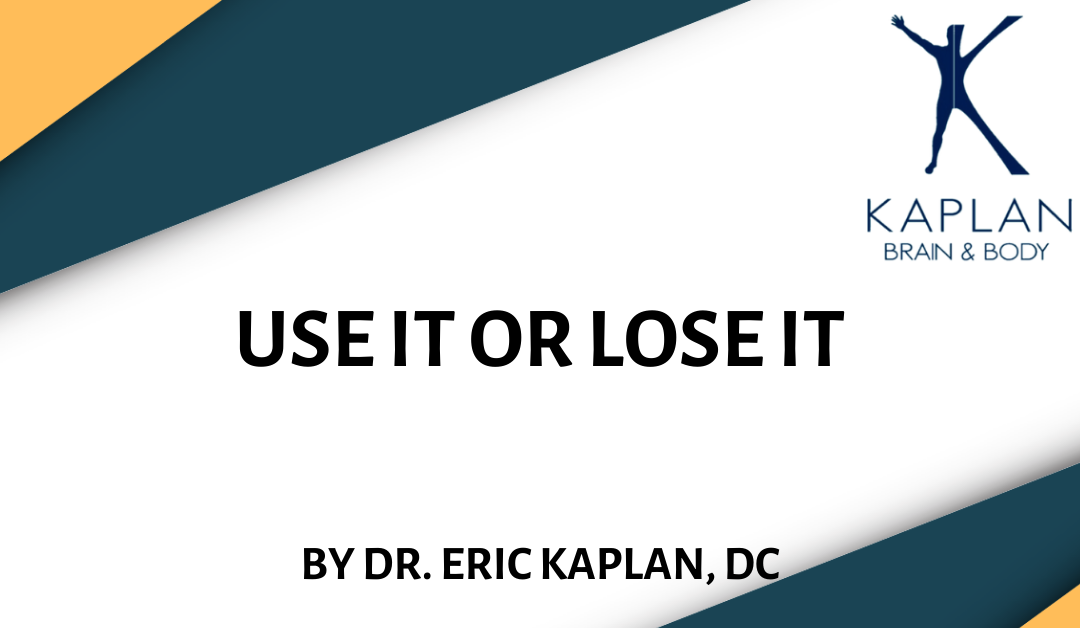To boost your brainpower, we should focus on discovering any areas of the brain that have weak signals and addressing those specific areas to help them develop and function better. In my practice, we have technologically advanced equipment to diagnose areas of the brain that are not functioning at optimal levels. Using technologies like Videonystagmography (VNG), CAPS posturography, Interactive Metronome, electromyography, pulse oximetry, neurosensory integrators, and video balance boards, we can find areas of the brain that are not working properly and then come up with exercises that are proven through neuroscience to activate those specific areas of the nervous system.
For example, if the VNG finds that the frontal cortex is not firing properly, activating olfaction with smell while patients perform fine finger movements and fast eye movements can create neuroplastic changes through spatial and temporal summation. Spatial summation is when patients perform many exercises at the same time, and temporal summation is when they perform these exercises repeatedly to create long-term results. If the right frontal cortex is worse than the left frontal cortex in a hemispheric distribution, patients would only do the finger exercises on the left side, the quick eye movements to the left, and the smell only in the right nostril. The more specific you are with these neuroplasticity exercises, the better results you get. By utilizing proper brain exercises, we can help stop the beginning stages of frontotemporal dementia.
If an evaluation finds that the area of the brain called the parietal cortex is not working properly, it is most appropriate to do a type of therapy called proprioceptive exercises. For example, a doctor may draw letters on certain parts of the body while the patient, with his or her eyes closed, tries to correctly identify the letter. Another test has the doctor touch a specific point on the body, which patients must then touch while keeping their eyes closed. Or we might recommend balancing on one leg with your eyes closed, as this can only be done with good proprioception. A final example of a proprioceptive test is where we have patients identify different objects only by feeling with their hands or feet, while keeping their eyes closed. Brain exercises focused on identified weaknesses are very important to maximize your potential and maintain high functioning levels. We can provide this for all of the different areas of the brain.
My patients are always saying, “I exercise my brain because I do the crossword puzzle every day.” Sure, that is a good start, but it may not be specific to the area of the brain that needs work. Because they do it every day, it probably isn’t working on the weak areas, but only on areas that are already strong. That is why we do a proper evaluation to determine which specific area of the brain most needs work. People ask me about doing brain exercises on the computer, and I respond that brain exercises are best when they involve movement. The brain loves movement, so it is recommended you do activities where you are not sitting at a computer or using a tablet or phone rather than moving your body.
If you want to work your brain while sitting, make sure you change it up. Do the crossword puzzle on Monday, Word Jumble on Tuesday, Sudoku on Wednesday, Word Find on Thursday , Scrabble on Friday, Lumosity on Saturday, and Memory Match on Sunday. The brain loves new activities, and brain function increases with novelty.
If you or someone you know are interested in learning more about boosting your brainpower without drugs, surgery, injections, supplements, or herbs, please purchase my new book, Boost Your Brainpower: A Guide to Improving Your Memory & Focus. What better gift to give yourself and others this holiday season than the gift of health! Visit www.kaplandc.com/holidayspecial to purchase your copy for 50% off (usually $20 – now only $10.)

